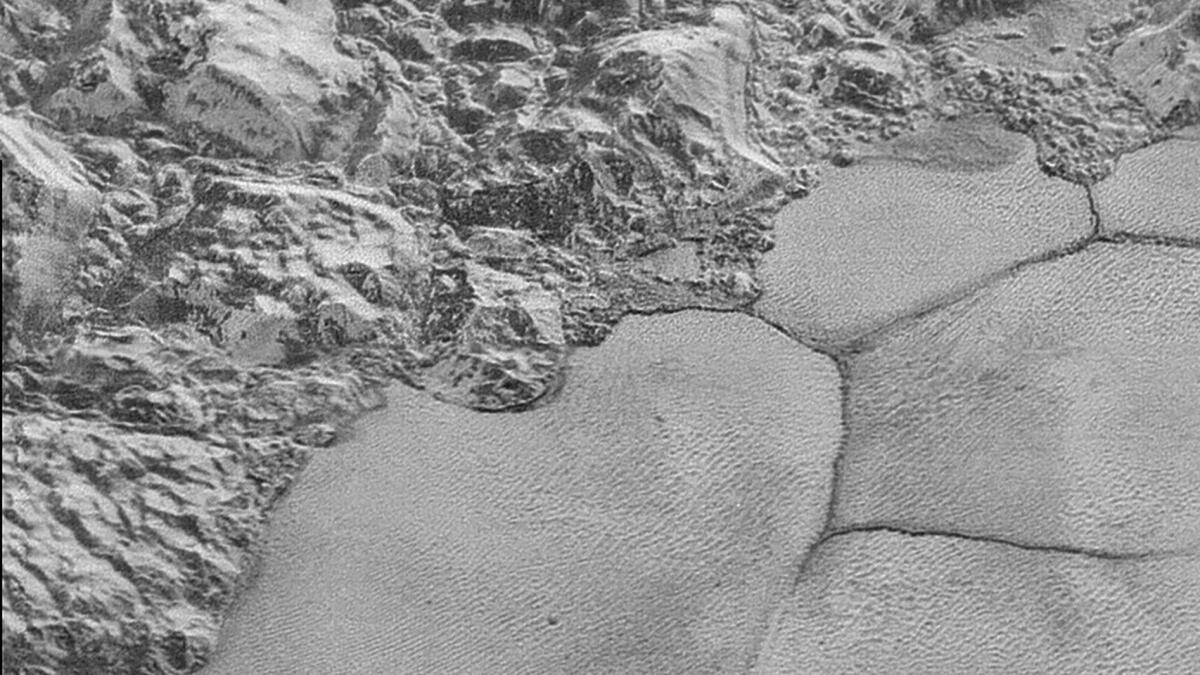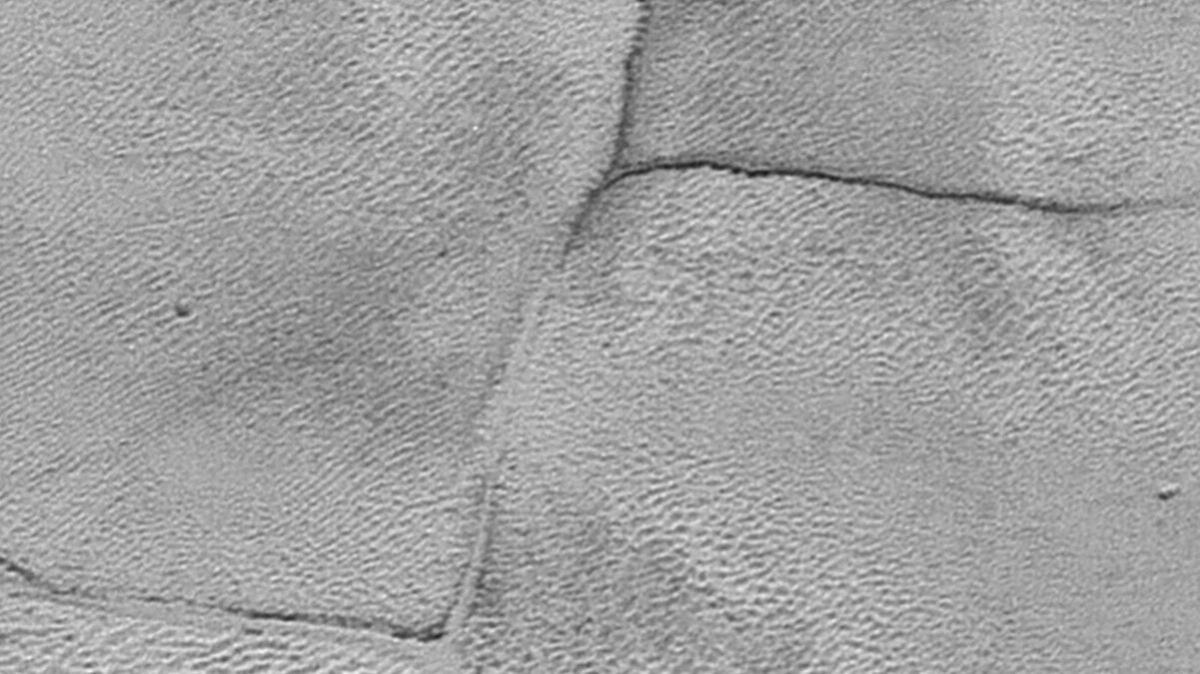Dunes of methane ice? Tiny Pluto’s surface reveals big surprises

- Share via
With just a single flyby, NASA’s New Horizons spacecraft has already revealed that Pluto is an active little world with mountains and an atmosphere. Now it’s found another surprisingly Earth-like feature: dunes.
The discovery, published in the journal Science, fills in a portrait of Pluto as a dynamic, changing body — one that could shed light on the mysterious objects that lie well beyond its distant orbit.
“I think this gives us better evidence than almost anything we’ve seen so far that this is a dynamic little world,” said lead author Matt Telfer, a planetary scientist at Plymouth University in England. “It’s not a cold, icy blob out on the far reaches of our solar system.”
Pluto is so distant that it takes 248 years to orbit the Sun; it comes no closer than 2.8 billion miles from our home star. Before New Horizons flew by the demoted dwarf planet in 2015, little was known of this small, freezing, dimly lit world.
“Before NASA’s New Horizons mission, the surface of Pluto was shrouded in mystery,” Alexander Hayes of Cornell University, who was not involved in the paper, wrote in a commentary. “No one knew what to expect from its surface and most scientists shied away from detailed speculation, except to say that the one thing we should expect is to be surprised.”
New Horizons changed all that, Telfer said. Before the mission’s flyby, the best images (from NASA’s Hubble Space Telescope) were blurry, pixelated affairs. But the spacecraft’s images revealed the dwarf planet’s varied terrain in extraordinary detail.
“We suddenly had this rush of data coming back over the few months following the flyby that revealed mountains, that revealed glaciers, that revealed really a dynamic landscape — not really what was expected,” Telfer said.
Pluto’s giant, heart-shaped nitrogen glacier was crowned the largest known glacier in our solar system. It had an atmosphere — vanishingly thin, but still one with hazes and which seemed to be sticking to the dwarf planet better than scientists had predicted. Pluto might even have a water-ice ocean hidden in it today.

This video demonstrates scientists’ best guess about how Pluto wound up with methane dunes despite having such a thin atmosphere.
Encouraged, Telfer began looking for more signs of geological activity on Pluto — namely, dunes, which are formed as the wind moves solid grains into regular ridge-like patterns. Dunes are found on Earth, Mars, Venus, Saturn’s moon Titan (where they’re made of hydrocarbons) and perhaps even the comet 67P/Churyumov-Gerasimenko. Telfer and a few colleagues would pass one another messages as they found promising candidates, but they eventually turned out to be duds — except for one.
These parallel ridges lay near high mountains and seemed to form perpendicular to markings left by the wind — exactly what would be expected in dune formation, Telfer said.
But how could Pluto’s wispy atmosphere, whose surface pressure is roughly 100,000 times lower than Earth’s, move these grains around? The scientists realized that as the sun hit the surface, slightly raising the temperature, it would cause frozen nitrogen to sublimate — go straight from a solid state to a vapor. Those sudden puffs of nitrogen would shoot the still-frozen methane grains into the air like popcorn in a microwave, allowing the wind to then move these airborne grains around.
The findings may cause researchers to reevaluate their expectations for similar activity on other worlds, Hayes said.
“If an extremely tenuous atmosphere like that of Pluto can support the generation of bedforms from wind-driven sediment, what kind of eolian activity might we see on places like Io (a moon of Jupiter) or Triton?” he wrote.

The discovery could also offer a hint to what New Horizons might find as it explores the Kuiper Belt, a ring of icy debris that extends far past the orbit of Neptune (Pluto is the belt’s largest known member). The spacecraft is en route to fly by Kuiper Belt Object 2014 MU69, where it might learn more about these mysterious denizens of the far reaches of our solar system.
In the meantime, many questions remain unanswered about Pluto’s methane dunes, Hayes said.
“Most notably, it remains to be shown how high the dunes are, when they are most active, whether they change, and whether entrainment can occur without lofting,” he wrote.
New Horizons may have passed Pluto by — but theoretical work, anchored by what scientists have now learned about the dwarf planet, could shed more light on these mysterious surface features, Telfer said.
Follow @aminawrite on Twitter for more science news and “like” Los Angeles Times Science & Health on Facebook.
MORE IN SCIENCE
This futuristic pill senses signs of disease inside the body, then sends a wireless alert to a phone
The asteroid that wiped out the dinosaurs also shaped the evolution of birds
UPDATES:
6:15 p.m.: This story was updated with additional information from Alexander Hayes and Matt Telfer.
This story was originally published at 11 a.m.




